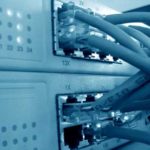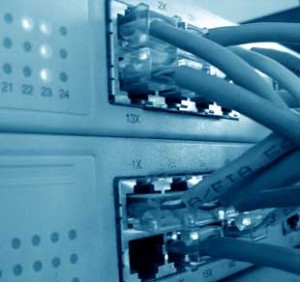
Roughly 40 percent of Americans do not have high-speed internet access at home, according to new Commerce Department figures that reinforce what some educators believe is causing some students to fall behind.
“There’s lots of talk about digital literacy. That’s something that should be built into the curriculum,” said Charles Benton, chairman and CEO of the Benton Foundation.
“The three R’s alone are not sufficient for today’s needs. We’ve got to be using today’s tools. It’s an old point, but we’ve got to keep beating that drum until we get the funding.”
The number of households without high-speed internet access underscores the challenges facing policy makers who are trying to bring affordable broadband connections to everyone.
The Obama administration and Congress have identified universal broadband as a key to driving economic development, producing jobs, and bringing educational opportunities and cutting-edge medicine to all corners of the country.
“We’re at a point where high-speed access to the internet is critical to the ability of people to be successful in today’s economy and society at large,” said Larry Strickling, head of the National Telecommunications and Information Administration (NTIA), an arm of the Commerce Department that released the data Feb. 16.
The NTIA and the Rural Utilities Service, part of the Agriculture Department, are in the middle of handing out $7.2 billion in stimulus funding for broadband access. Most of that money will be used to build networks in parts of the country that lack high-speed internet access.
Next month, the Federal Communications Commission (FCC) will deliver policy recommendations to Congress on how to make universal broadband a reality. Among other things, the FCC is expected to propose expanding the fund that subsidizes telephone service in poor and rural communities, finding more airwaves for wireless broadband services, and modernizing the FCC’s rural telemedicine program to bring thousands of health clinics online.
FCC Chairman Julius Genachowski said Feb. 16 he wants 100 million U.S. households to have access to ultra high-speed internet connections, with speeds of 100 megabits per second, by 2020. That would be several times faster than the download speeds many U.S. homes with broadband get now, which range from 3 megabits to 20 megabits per second.
Genachowski also wants the U.S. to test even higher broadband speeds. One such testbed network could come from Google Inc., which said last week it plans to build a few experimental fiber-optic networks that would deliver 1 gigabit per second to as many as 500,000 Americans. That would be 10 times faster than a 100 megabit-per-second connection.
The NTIA report offers a snapshot of the current broadband landscape. It stems from a Census Bureau survey of about 54,000 households conducted in October of last year.
The statistics show that U.S. broadband usage continues to grow, with 64 percent of U.S. households subscribing to high-speed internet as of October, up from 51 percent two years earlier.
But the results also highlight remaining hurdles, particularly in rural America. While 66 percent of urban households subscribed to broadband in October, that was true for only 54 percent of rural households, the survey found.
That is partly because broadband is not as widely available in rural areas. The phone and cable companies that provide the bulk of broadband connections in the U.S. have been slower to build high-speed systems in places that are too sparsely populated to justify the costly network investments.
Lack of broadband availability is only part of the challenge for Washington, however, because even in places where broadband is available, not everyone subscribes. Among households that do not have broadband, the survey found, 38 percent said they don’t need it or are not interested. Twenty-six percent said it is too expensive. Only 3.6 percent said they do not subscribe because it is not available where they live.
For policy makers, Strickling said, this means that helping people see “what they are missing” is another important piece of the puzzle. Last year’s stimulus bill set aside at least $250 million for broadband adoption programs to teach people computer and internet skills and ensure they have the equipment to get online.
Other key survey findings include:
• 89 percent of Americans with an annual household income greater than $150,000 used a broadband connection at home in October, compared with 29 percent of Americans with a household income less than $15,000.
• 67 percent of Asian Americans and 66 percent of Caucasians used broadband at home in October, compared with 46 percent of blacks and 40 percent of Hispanics.
• Home broadband usage was highest among people aged 18 to 24, at 81 percent, and lowest among people 55 and older, at 46 percent.
Not everyone agrees the broadband access gap is inhibiting some children’s education. Steve Peha, president of Teaching That Makes Sense, said that while broadband access for adults is valuable as more college degrees go online, the value to children is overrated.
“The educational value to the 40 percent of ‘have nots’ is directly proportional to the educational value to the 60 percent of ‘haves.’ So how much ‘educational value’ do the ‘haves’ get from broadband? The answer, at least according to the most recent research, is not much. Most kids use broadband for social activities, not learning activities,” Peha said.
Links:
Federal Communications Commission
- ‘Buyer’s remorse’ dogging Common Core rollout - October 30, 2014
- Calif. law targets social media monitoring of students - October 2, 2014
- Elementary world language instruction - September 25, 2014



Comments are closed.